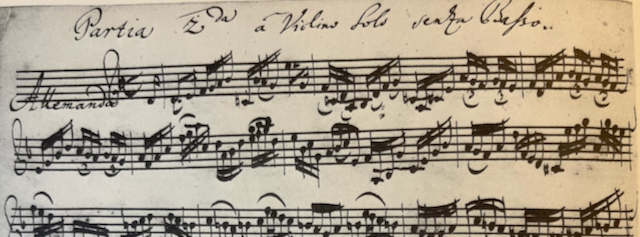
Brief Overview of Music History
The listed compositions can be heard at the
following YouTube Playlist: Listening List 1
This list is a general representation of the history of music in the European tradition, known popularly as "Classical" music. A scholar will notice significant holes in this list! It is only intended as an appetizer, a starter kit. Each important period listed below has a counterpart in visual art and literature; each is accompanied here by a brief generalization of the main trajectory of the period, with the benefit of hindsight.
Note about the YouTube links: 1) random advertisements are chosen and inserted by the YouTube service, not by me; 2) you may need to adjust your speaker volume for each link - some have softer or louder median volume.
Medieval (500 – 1400)Early musical notation gives us a written record; later, this period brings the development of polyphony |
|
|
Léonin (? – 1201) |
Organum Duplum: Judaea et Jerusalem (1150s?) |
Renaissance (1400 – 1600)Development of counterpoint, a logical extension of polyphony |
|
|
Giovanni Pierluigi da Palestrina (c. 1525 – 1594) |
Tu Es Petrus – Motet (1585) |
Baroque (1637 – 1750)Common-practice tonality (music in a specific “key”); development of the orchestra and other instrumental ensembles; expansion of musical forms and more complex polyphony |
|
|
Johann Sebastian Bach (1685 – 1750) |
|
|
|
Partita in D minor for Solo Violin, BWV 1004 (1720) (Heifetz) |
|
|
Partita in D minor for Solo Violin, BWV 1004 (1720) (Kremer) |
Classical (1750 – 1820)Clarity of form and texture; new developments in building musical instruments with wider dynamic range |
|
|
Wolfgang Amadeus Mozart (1756 – 1791) |
|
|
Ludwig von Beethoven (1770 – 1827) |
Symphony No. 7 (1812) |
Romantic (1800 – 1910)Expansion of forms, development of greater chromaticism, greater equality of musical voices |
|
|
Niccolo Paganini (1782 – 1827) |
24 Caprices (c. 1805 – 1809) |
|
Felix Mendelssohn (1809 – 1847) |
|
|
Pyotr Ilyich Tchaikovsky (1840 – 1893) |
Symphony No. 4, Op. 36 (1878) |
|
Jean Sibelius (1865 – 1957) |
Violin Concerto (1905) |
Impressionism (1890 – 1930)Exploration of mood and color, exploring the boundaries of tonality and chromaticism |
|
|
Maurice Ravel (1875 – 1937) |
String Quartet (1903) |
|
Claude Debussy (1862 – 1918) |
Images pour Orchestre (1905–12) |
Neoclassicism (1920 – 1950)Return of some restraint in form, but still pushing against the edges of chromaticism |
|
|
Igor Stravinsky (1882 – 1971) |
The Firebird Suite (1910) |
|
Igor Stravinsky (1882 – 1971) |
Symphony of Psalms (1930) |
|
Sergei Prokofiev (1891 – 1953) |
Violin Concerto No. 2 (1935) |
Contemporary/Postmodern (1950 – present)Exploration of extreme boundaries in form and tonality, and, in some cases, musical notation |
|
|
Iannis Xenakis (1922 – 2001) |
Anaktoria (1969) |
|
György Ligeti (1923 – 2006) |
Atmosphères (1961) |
